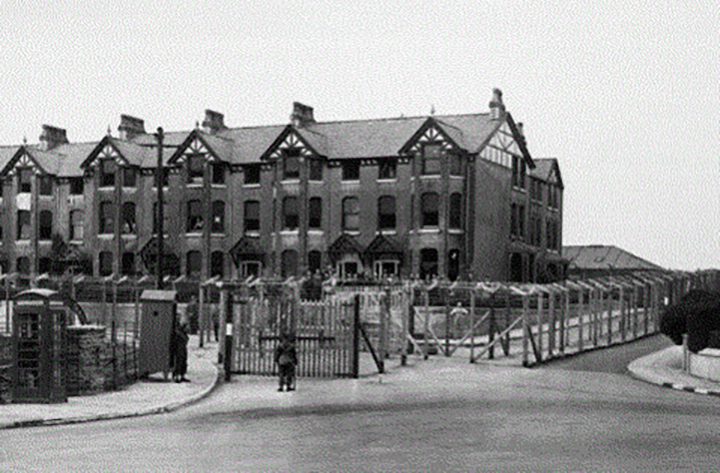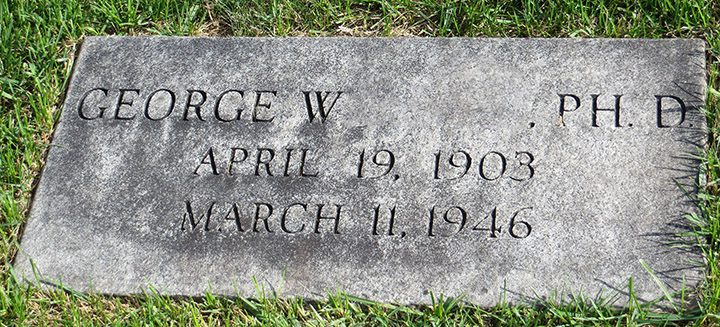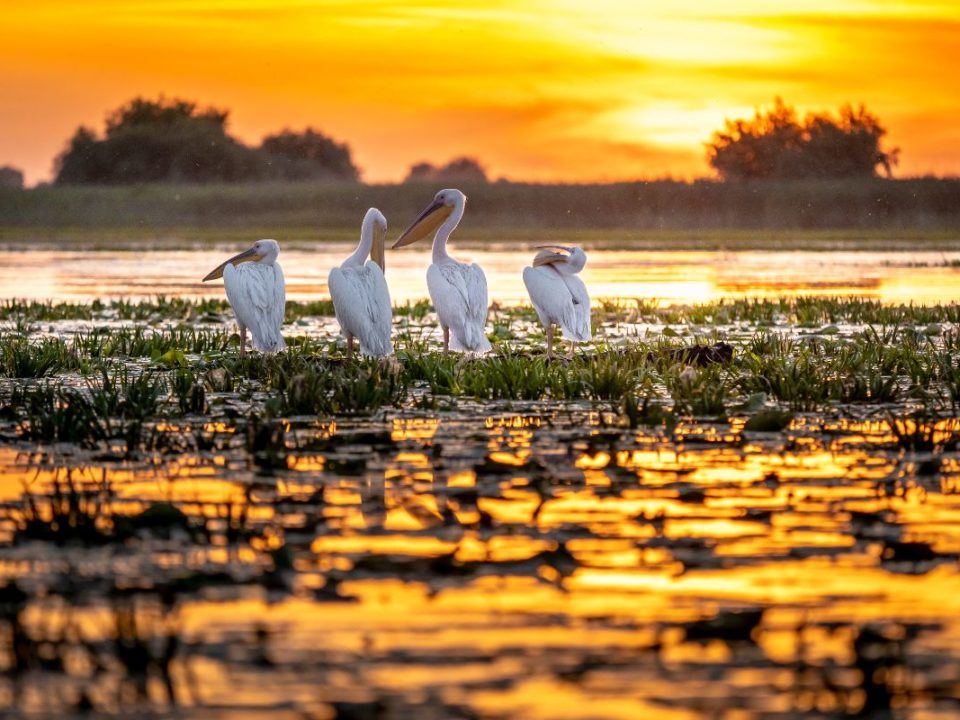
The Road To Targu Mures III
December 1, 2021
Constantin Brancusi – The Incredible Life Story
February 18, 2022Part Four: THE DUNERA BOYS
Family history is all the rage. More and more people are joining ancestry sites and seeking to travel to their ancestral homelands in search of answers or to immerse themselves in their culture and heritage. Romania is no exception. With the help and guidance of Raluca Spiac, CEO of bespoke travel agency Beyond Dracula, British-Lebanese filmmaker Mouna Mounayer discovered the first real clues to the history of her grandfather’s mysterious past. He was a man she hadn’t known existed and who had rearranged her family tree, but was he a Nazi spy or an unfortunate victim of war? Read on to find out what happened in the last instalment of our series, The Road to Targu Mures.
Here you can read part 1, part 2 and part 3 of this series.
May 10, 1940 was an unlucky day for George W. In truth, it was a bad day for everyone, but my grandfather didn’t know that yet. On that particular spring morning, the British government had dragged him from his sickbed in Dublin–suffering from a bout of pneumonia–to attend a meeting in London on a project of national importance. The pneumonia had put a temporary halt to his negotiations with the Irish government on a joint project with the British to build a Farina factory to aid in the production of food supplies for the army. His chest must have been tight and his breathing erratic as he climbed the ladder into the rear of the Aer Lingus DC-3 parked on the runway at Dublin’s Collinstown Aerodrome. What the British and the Irish wanted was access to the techniques he had patented for extracting a certain molecule from maize. He and his father before him had perfected these techniques. George was renowned for his work as a chemical engineer throughout Europe.
In 1934, he married Catholic Adrienne and settled in Hamburg, Germany for a while and then moved his family back to Vienna. In early 1935, his father, Heinrich, died, and six months later, his mother died and his daughter was born, on the same day. Up to this point, barring the death of his parents, George probably considered himself a lucky man. He’d made a name for himself, continued his father’s scientific breakthroughs, and, luckiest of all, he fled Vienna, with his small family, to The Hague, one day before the Anschluss. The thought that his wife, and especially his half-Jewish daughter, were safe from the German war machine in Holland most likely comforted George when he touched down at Liverpool’s Speke Aerodrome. He was on his way to London by train when he heard the news.
BBC bulletin, 10th of May, 1940
Churchill takes helm as Germans advance
German forces have invaded Holland, Belgium and Luxembourg by air and land. The invasion began at dawn with large numbers of aeroplanes attacking the main aerodromes and landing troops. The Dutch High Commission says more than 100 German planes were shot down by its forces. In London, it has been announced that Winston Churchill will lead a coalition government after Prime Minister Neville Chamberlain said he was stepping aside.
On May 10, 1940, the so-called ‘phony war’ ended when the Nazis invaded Holland, Belgium and Luxembourg, and World War II began in earnest. Twelve days later, George’s concerns for the safety of his wife and daughter were pushed aside. In one of the darkest moments in British modern history, Winston Churchill’s cabinet, under pressure from the mounting paranoia of fifth columnists infiltrating Britain, herded what they called Enemy Aliens–Jews, Austrians, Germans, and Italian men–into camps in various locations around the country. Most of these people were ordinary citizens who had lived in Britain for years, if not decades. George W. was first taken to a camp in Douglas, Isle of Man. At his tribunal, he tried to argue that he was in England at the invitation of the same government that was now accusing him of working secretly for the Germans.
You may wonder how I know all of this. After my successful trip to Targu Mures, Romania, organised by Raluca Spiac, CEO of Beyond Dracula, I was armed with the names of my great grandparents. Through them, the research gods revealed the information I’d been hunting for nearly twenty-five years. George W’s life came tumbling into focus like a series of falling dominoes. In 2015, the Australian National Archives unsealed his file, and I finally had the other half of the documents that had been unsealed by the British National Archives a few years earlier. Top secret correspondence between government and military departments painted a terrifying and heartbreaking picture of George’s final years. My fears that he would turn out to be a Nazi spy were unfounded. He had escaped the Anschluss only to be caught in the net of the escalating hysteria that all foreigners or foreign-born residents on British soil could be spying for the Germans.
One particular letter, written by George’s colleague, Dr Hans S, to the Home Office, revealed a great deal about what happened to him in May 1940.
“Dr W is, in the words of Sir John Anderson (House of Commons, 4th July, 1940), “a scientist who is well disposed to this country and is willing and able to assist the national war effort.” Actually, Dr W is a passionate enemy of everything that Nazi Germany stands for. Further, an eminent scientist and one of the very few available experts in the industry of starch and starch products… Dr George W, 37, had been busy for almost two years, bringing about the establishment of a Farina industry in the United Kingdom. His father, Mr Heinrich W, was already a pioneer in the starch industry, and both father and son made important inventions concerning starch and starch products… On May 20th, Dr W applied for an extension to his visa, which was recommended by the Ministry of Food, and he was granted that extension. In the meantime, however, Dr W was interned under Aliens Class B, which class was interned under the general order issued by the Home office…”
Worse was to come, in what Winston Churchill declared as “a deplorable and regrettable mistake.” On the morning of July 10, 1940, the authorities transported George and thirty other men, under military escort, from Huyton Internment Camp to the port of Liverpool, where they joined at least two thousand men standing on the dockside. They’d been told that they were going to a camp in Canada. Lined up in the rain, they shuffled up the gangway of His Majesty’s Military Transport Dunera. After being strip-searched, George was forced below decks. His suitcase was confiscated, on the understanding that it would be returned when he disembarked.

In a dormitory below decks, hammocks hung from port to starboard in rows of ten, and at least thirty deep. Looking around, George probably thought it looked more like a sardine can than a dormitory for Enemy Aliens. Long low benches were placed in between the hammocks, and in one corner was a mess table, which would now serve as a bed for at least twenty men. From his hammock, he probably watched as men of all ages and professions were crammed into the room, including students, scientists, philosophers, artists, and musicians. The wild-eyed scrambled for the hammocks while the glassy-eyed shuffled to the benches and the mess table. Sharing quarters with four hundred men in a room with no windows and only a couple of flimsy bulkhead lights had to be daunting enough, but still worse was to come. He was now and forever to be known as a Dunera Boy.
The tragedy of the Dunera Boys was dramatised in a 1980s TV series, but it didn’t do justice to the sadistic treatment and brutality endured by some 2500 men, aged 16 to 60, aboard a ship with a capacity of 1600 passengers, at the hands of 309 British soldiers. The men had been told that they were going to Canada, but the Dunera was, in fact, going to Australia.

It was a dangerous 57-day voyage in waters crawling with German submarines, with little food, no clean water, one bar of soap and one towel for every 100 men, and just 10 toilets for almost 2500 men. The Dunera was hit by three torpedoes in the Atlantic, which miraculously glanced off its hull.

The ship’s arrival in Sydney has been regarded as the greatest importation of academic and artistic talent ever to have entered Australia as prisoners on a single vessel. Amongst George W’s fellow internees were the likes of athlete Franz Stampfl, who coached Roger Bannister for his record-breaking 4-minute mile; Anton Walter Freud, grandson of psychoanalyst Sigmund Freud; artists Ludwig Hirshfield Mack and Heinz Henghes; economist Fred Gruen; and philosophers Kurt Baier and Gerd Buchdahl. The list is too long to mention here, but only 400 of the 2500 internees were true POWs (Nazis and Italian fascists). The rest, like George, were, for lack of a better expression, thrown out with the bath water. Lieutenant-Colonel William Scott, the officer in command of the 309 British soldiers guarding the Dunera Boys, was court-martialled and “severely reprimanded.” The British government estimated the worth of the internees’ stolen and damaged property at £35,000, which is equivalent to £2 million pounds in today’s money. The internees received only £35,000 in compensation. An inquiry into the Dunera scandal was held, but its findings are sealed until 2040 under the Official Secrets Act.
I started this series of articles on a quest to identify family roots I did not know existed. I’d compared George to the Strigoi, the undead of Romanian legend who haunt their living victims. That was, perhaps, unfair to George. He didn’t haunt me; it was I who haunted him, across decades and continents. Today, I know more about George’s life and movements than I do about my own dead father. But, unlike my relationship with my father, I don’t know George. I don’t know what kind of man he was, if he had a sense of humour, if he had any warmth and compassion, or if he’d been a good father and husband. His letters to the British government were formal. He wrote to them asking for help to prove his Austrian citizenship, because his passport had been destroyed in the Blitz. He made no mention of his wife or daughter, and he did not plead. I did not get any insights into his character from these cold and impersonal letters. I only have my late grandmother’s word that he was a gentle and kind man, and the word of his colleague, Dr Hans S., that he was an upstanding man who despised the Nazis.
George’s story doesn’t end with the Dunera. He eventually negotiated his way out of the Australian internment camps and flew to India, where he met my grandmother, before sailing alone to New York, where he died of a heart attack only six weeks later. He was 43 years old. Both his daughters are still alive, but I’m saving that part of the story for a novel I am writing based on my search. I have to confess that I have a soft spot for inflection points, and May 10, 1940, is one such point for my family. When I first started looking for George, he was a distant, shadowy figure with whom I had no emotional connection. He was just a mystery I wanted to solve. May 10, 1940, was a bad day for George. It was the day he lost contact with his wife and daughter, the day pneumonia damaged his heart, and it was the day that sealed his fate. But as his story unfolded, I realised that such days, like coins, have two sides. I wouldn’t be here if it hadn’t been for this unsung hero, who crashed into my life, reconfigured my family tree forty-four years after his death, and whose story inspired me to become a writer. Through him, I met amazing people, some of whom have become close friends, and one, a long-lost new relative (George’s cousin), who has generously shared his insights into my unknown family. Looking for George changed me, and if it taught me anything, it’s that we are all linked to our ancestors, whether we know them or not, by sorrow and love, by unlucky events and happy coincidences. With all due respect to those whose lives were shattered or lost on May 10, 1940, I will always choose to think of it as my lucky day–the day I gained a grandfather whose achievements and endurance in the face of injustice have become the standards to which I aspire.
Let those who fret in petty discontent
of grievances and wrongs, of stale mishap,
be petulant in pain nor see the gap
between injustice done and justice meant.
I cannot witness the approaching death
of a whole world – and still bewail my fate,
while circling overhead already wait
the silent vultures of the aftermath.
Poem by Dunera Boy, Georg Rapp, Hay internment camp, New South Wales, Australia, 1941.







2 Comments
Your tenacity for getting the history of George is remarkable. Enjoy may not be an appropriate word to describe my experience reading about George, but it I too wanted to know what happened. I must say that it has added new aspects of the history of WWII that I thank you for sharing.
I look forward to reading your novel when that time comes, and I hope you will keep a list of all who have commented.
Alicia
Thank you, Alicia
Tenacious is one way of putting it. Some have called it obsessive, but I put it down to my training as an archaeologist and the fact that I love solving mysteries. The one regret I have is that solving my grandfather’s past was an intellectual pursuit and I never really got to know the man behind the mystery. Warm regards, Mouna